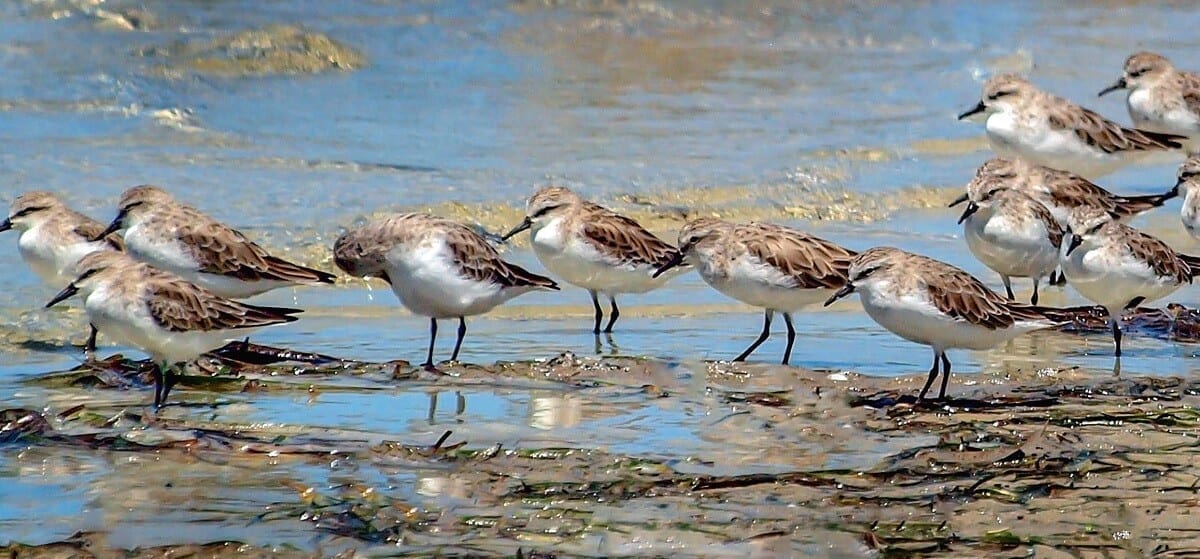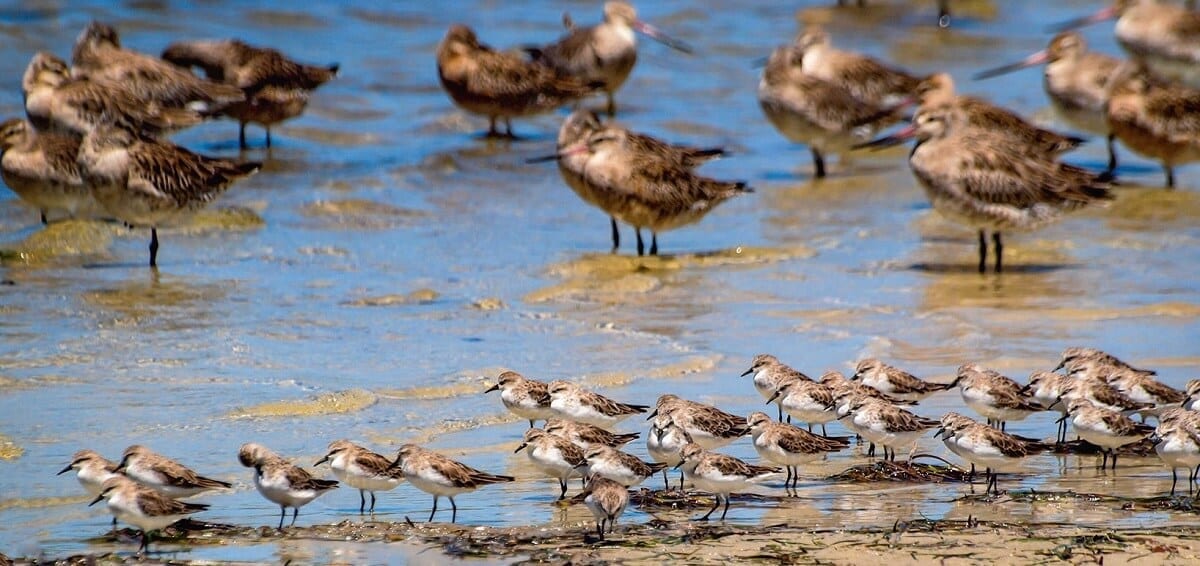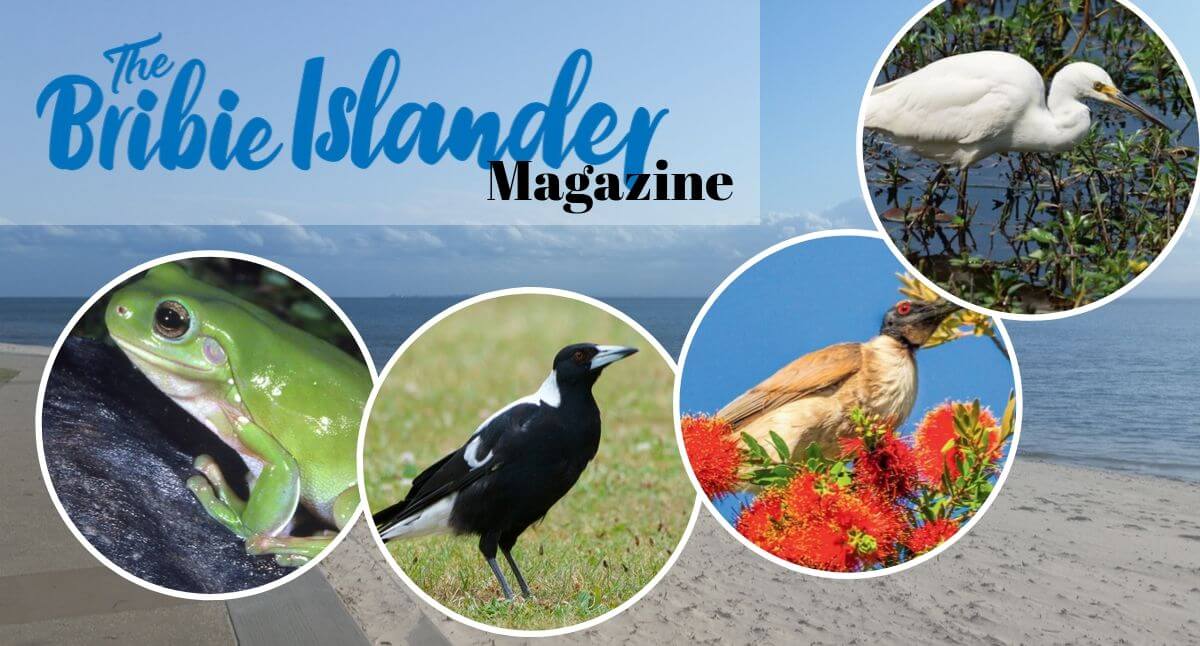Tags: Wildlife. Native. Birds. Australian. Red-necked Stint. Queensland. Moreton Bay. Bribie Island.
Red-necked stints are the smallest migratory shorebirds to visit our beaches. They are very common and descend onto our sandy beaches in flocks to mingle with other waders roosting and feeding. Kakadu Hide, the beach at Buckley’s Hole and the roost at Toorbul are places where you are likely to see them.
They start arriving in late August to early October and remain for the summer, so by now they should all be back from their breeding grounds in the Northern Hemisphere. Red-necked Stints are tiny birds just a little larger than Sparrows. They are 13-16 cm in length and weigh just 25-40 g.
Their non-breeding plumage is brown-grey on heads and backs and whitish underneath. Legs and bills are short and bodies are chunky. Male and females are similar in appearance. Their smallness distinguishes them from other shorebirds. When roosting, flocks frequently burst into flight and then come back to their roosting spot.
When feeding they dart about looking for food pecking at worms, crustaceans, molluscs, aquatic plants and insects on wetlands and mudflats at low tide both day and night. They feed in flocks and must eat huge quantities of food before tackling their marathon flight to the north. During breeding in the tundra, they eat mostly insects. Habitats are quite diverse. As well as frequenting beaches and sand flats they can also be found in inland freshwater wetlands.

The southern Summer is spent in Australia, SE Asia, and NZ and during late autumn they fly off to the Arctic north to breed. Before leaving our shores, many have already developed their breeding plumage. Feathers on the throat neck and breast become a reddish colour – hence the name Red-necked Stint.
Their journey takes them along the shores of the Yellow Sea where they stop to rest and eat to replenish their strength for the rest of the journey. They are known to fly 5000 km or more between stops. When reaching the Siberian Tundra or Western Alaska up to 15000 km from Aust they make their nests on damp moss and lichen. Nests are just a shallow indentation on the ground and lined with grass and leaves.
Usually, about 4 olive blotched eggs are laid. Both parents incubate the eggs and care for the young. Chicks leave the nest soon after hatching. Birds that have been unsuccessful breeders leave for the south in June. Breeding females migrate south almost immediately after the chicks have hatched leaving the males to finish raising the babies. Males are the next to leave and the juveniles leave when strong enough to tackle the long journey.

It is amazing how they know how to find their way to their summer destination. Juveniles spend their first winter in Australia and are 2 years old before migrating to breed in the north. Red-necked stints are common and widespread in Australia. They are being threatened by development on the shores of the Yellow Sea where they stop to rest and in Australia where they feed and roost.
Plastics have become a problem to all shorebirds, harmful when eaten and deadly when caught up in fishing lines and plastic bags. Storms and cyclones occurring during their migration can be a big problem as if they are blown off course they often die of hunger and exhaustion.
A few interesting facts: Kalidrus is from the Ancient Greek and was a term used by Aristotle for small grey-brown waterbirds. Ruficollis is from the Latin Rufus “red” and collum meaning “neck”. A group of stints is known as a “spell”.
Other Articles
- AUSTRALIAN BOOBOOK OWL – NINOX NOVAESEELANDIAE
- Bribie island Wildlife EASTERN GREAT EGRET – ARDEA ALBA MODESTA
